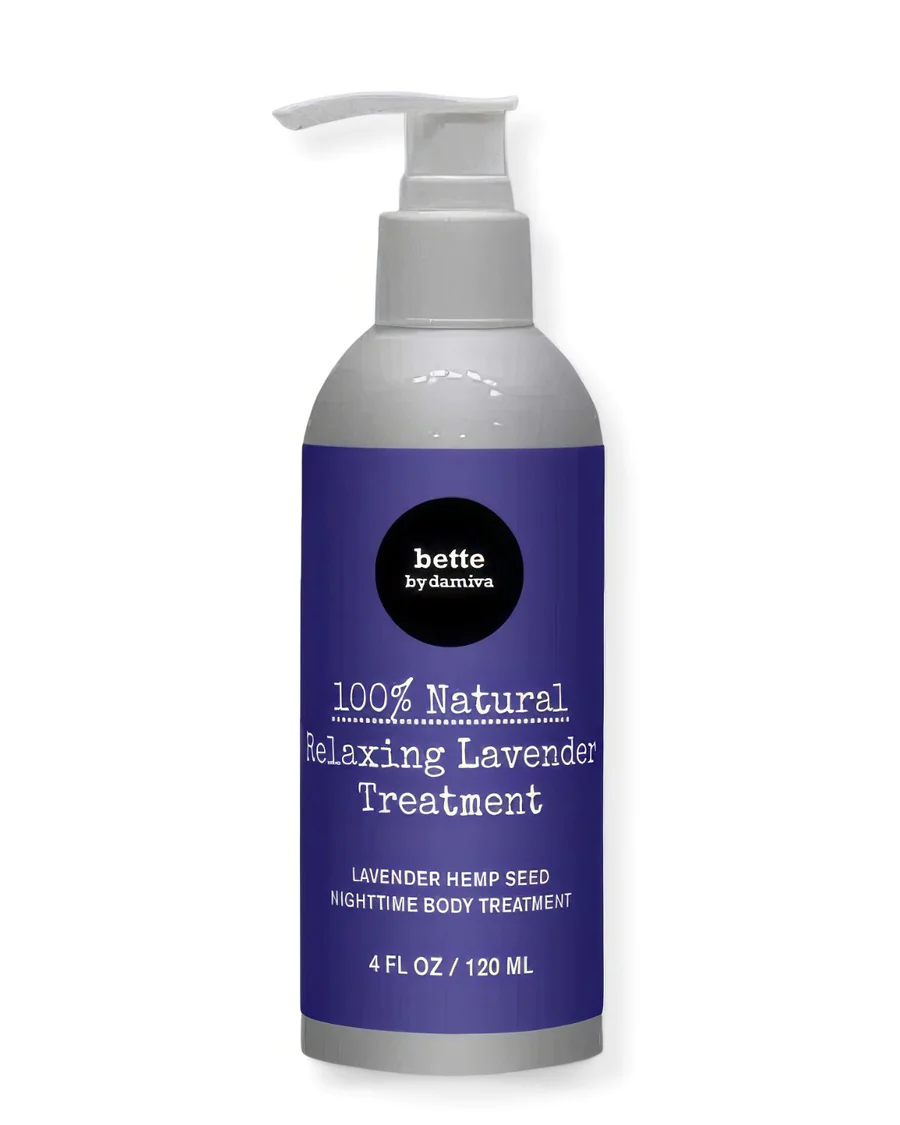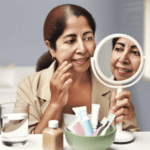Menopause and Nonhormonal Therapies
Menopause is a natural biological process that marks the end of a woman’s reproductive years, typically beginning around the average age of 52. This transition is characterized by a range of symptoms due to hormonal fluctuations, with vasomotor symptoms such as hot flashes, night sweats, and flushing being the most common. These symptoms can last for several minutes and may occur at any time, often disrupting sleep and daily activities. Approximately 80% of menopausal women experience hot flashes, which can persist for more than seven years and, in some cases, extend beyond a decade.
The Significance of Nonhormonal Therapy Options
While hormone therapy remains the most effective treatment for managing hot flashes, it is not suitable for all women. Those with a history of breast cancer, heart attack, stroke, or blood clots are often advised against hormone therapy. Additionally, some women may prefer to avoid hormones due to personal or health reasons. As a result, nonhormonal therapies have become increasingly significant, offering alternative options for those seeking relief from menopausal symptoms. These therapies range from prescription medications to lifestyle interventions and complementary treatments such as cognitive behavioral therapy and clinical hypnosis.
Recent Developments in Menopause Therapy Guidelines
The North American Menopause Society has recently released new guidelines for the use of nonhormonal therapy in treating hot flashes. Dr. Juliana Kling, a women’s health specialist at Mayo Clinic and one of the authors of the new guidelines, emphasizes the inclusion of the latest FDA-approved medications, such as the neurokinin 3 receptor antagonist fezolinetant, and a review of other treatments. These guidelines also highlight the effectiveness of cognitive behavioral therapy and clinical hypnosis in managing vasomotor symptoms. However, evidence suggests that lifestyle changes alone, such as cooling techniques and avoiding triggers, may not provide significant relief. The guidelines aim to inform healthcare providers and patients about the various nonhormonal options available, ensuring that women can make informed decisions about managing their menopause symptoms.
Efficacy of Nonhormonal Treatments
Cognitive Behavioral Therapy and Clinical Hypnosis
Nonhormonal treatments for menopause symptoms, particularly hot flashes, have gained attention due to the risks associated with hormone therapy. Cognitive Behavioral Therapy (CBT) has emerged as an effective intervention. CBT focuses on changing patterns of thinking or behavior that are behind people’s difficulties, and it has been shown to significantly reduce the frequency and severity of hot flashes. Clinical hypnosis is another nonhormonal treatment that has demonstrated efficacy. It involves guided relaxation and focused attention to achieve a state of heightened awareness, often referred to as a trance. During this state, individuals can concentrate on specific tasks or thoughts, which in the case of menopause, can help manage the perception and distress associated with hot flashes.
Supplements and Over-the-Counter Treatments
Various supplements and over-the-counter treatments have been studied for their potential to alleviate hot flashes. Isoflavones, compounds found in soy products, have been one of the most extensively studied plant estrogens or phytoestrogens. Some studies suggest that isoflavones may help reduce hot flashes, but results are mixed and more research is needed to confirm their effectiveness. Black cohosh is another supplement that has been used to treat hot flashes, although its efficacy is not conclusively supported by scientific evidence. It is important for patients to consult with healthcare providers before starting any supplement, as they can have interactions with other medications and are not regulated by the FDA with the same rigor as prescription drugs.
Lifestyle Changes and Their Impact
Lifestyle modifications can also play a significant role in managing hot flashes. Regular physical activity, maintaining a healthy weight, and practicing relaxation techniques such as deep breathing exercises, yoga, or meditation have been associated with a reduction in menopause symptoms. Avoiding triggers such as hot drinks, caffeine, spicy foods, and alcohol can also help manage the frequency and intensity of hot flashes. Additionally, dressing in layers and keeping the bedroom cool at night may provide comfort and minimize the impact of hot flashes on sleep quality.
Overall, while nonhormonal treatments may not be as potent as hormone therapy, they offer viable options for women who cannot or prefer not to use hormonal treatments. The choice of therapy should be individualized, taking into account the severity of symptoms, patient preferences, and any contraindications to hormone therapy.

Bette 100% All-Natural Relaxing Lavender Body Lotion.
Chemical-Free
Your relaxing night time body moisturizer to leave the day’s stress behind. Decompress and wish your body good night with the calming scent of lavender.
Understanding the New Nonhormonal Medication
Mechanism of Action and FDA Approval
The recent approval of Veozah (fezolinetant) by the U.S. Food and Drug Administration (FDA) marks a significant advancement in the treatment of menopausal hot flashes. Veozah is the first neurokinin 3 (NK3) receptor antagonist to be approved for this purpose. Its mechanism of action is distinct from hormone therapy; it targets the brain’s regulation of body temperature. Specifically, it binds to and blocks the activities of the NK3 receptor within the hypothalamus, which is responsible for the thermoregulatory control. By doing so, Veozah effectively reduces the frequency and severity of hot flashes and night sweats experienced during menopause.
Comparison with Existing Nonhormonal Medications
Before the introduction of Veozah, the only other FDA-approved nonhormonal medication for menopausal hot flashes was paroxetine (Brisdelle), a selective serotonin reuptake inhibitor (SSRI). While SSRIs like paroxetine work by modulating neurotransmitters in the brain, Veozah’s action is more targeted towards the specific neural pathways involved in thermoregulation. This novel approach may offer a more direct mechanism for alleviating vasomotor symptoms, potentially with a different side effect profile compared to SSRIs.
Potential Benefits for Specific Patient Groups
Veozah’s nonhormonal nature is particularly beneficial for certain patient groups. Women with a history of breast cancer, cardiovascular events such as heart attacks or strokes, or those with a risk of blood clots are often advised against hormone therapy. Veozah provides a much-needed alternative for these individuals. Additionally, for women who prefer not to use hormone therapy or are seeking different options, Veozah expands the choices available to manage their menopausal symptoms effectively.
It is important to note that while Veozah is a promising new treatment, it is not without potential side effects. The most common ones reported include abdominal pain, diarrhea, insomnia, and back pain. Moreover, there is a warning for elevated hepatic transaminases, indicating a risk of liver injury. Therefore, patients are advised to undergo liver function testing before starting the medication and to continue monitoring while on treatment.
In conclusion, Veozah represents a significant step forward in nonhormonal therapies for menopausal hot flashes. Its unique mechanism of action and the potential to cater to women who cannot use hormone therapy make it an important addition to the therapeutic arsenal against menopause-related vasomotor symptoms.
The Role of Hormone Therapy in Menopause Management
Effectiveness of Hormone Therapy for Hot Flashes
Hormone therapy has long been recognized as the most effective treatment for hot flashes and night sweats associated with menopause. Estrogen therapy, in particular, can significantly reduce the frequency and severity of these vasomotor symptoms. The North American Menopause Society emphasizes that for many women, especially those who are under 60 years of age or within 10 years of menopause onset, the benefits of hormone therapy can greatly outweigh the risks.
Risks and Benefits of Hormone Therapy
While hormone therapy is highly effective, it is not without its risks. Potential adverse effects include an increased risk of blood clots, stroke, and certain types of cancer, such as breast cancer. However, the benefits, such as relief from menopausal symptoms, prevention of bone loss, and a possible reduced risk of colorectal cancer, can make hormone therapy a favorable option for many women. The decision to use hormone therapy is highly individualized, taking into account the severity of symptoms, personal and family medical history, and the woman’s preferences and concerns.
Why Some Women Cannot Use Hormone Therapy
Despite its effectiveness, hormone therapy is not suitable for all women. Those with a history of breast cancer, heart disease, liver disease, or a history of blood clots are often advised against this treatment. Additionally, women who are at high risk for these conditions may need to seek alternative therapies. Dr. Juliana Kling of the Mayo Clinic points out that the recent FDA approval of nonhormonal medications, such as fezolinetant, provides new options for women who cannot use hormone therapy. These advancements in nonhormonal treatments are crucial for ensuring that all women have access to effective menopause symptom management.
Impact of Menopause Symptoms on Quality of Life
Work-Related and Economic Consequences
Menopause, particularly the symptom of hot flashes, can have profound work-related and economic consequences. Studies have shown that women experiencing menopause symptoms are more likely to miss work, be less productive, or even leave their jobs. This not only affects individual careers but also has a broader economic impact. A study published by the Mayo Clinic found that an estimated $1.8 billion is lost in work time per year in the U.S. alone, with costs ballooning to $26.6 billion annually when medical expenses are factored in. These figures underscore the importance of effective management strategies for menopause symptoms to mitigate their impact on the workforce and economy.
Physical and Emotional Well-being
Hot flashes and other menopause symptoms can significantly disrupt a woman’s physical and emotional well-being. The sudden and intense heat can lead to discomfort, sleep disturbances, and fatigue, which in turn can contribute to stress, anxiety, and depression. The physical manifestations of menopause are often accompanied by emotional challenges, as women may struggle with the sense of losing their youth or fertility. The ripple effect of these symptoms can extend to personal relationships and overall quality of life, making it imperative to find effective therapies that address both the physical and psychological aspects of menopause.
The Importance of Multiple Treatment Options
Given the variability in how women experience menopause, it is crucial to have multiple treatment options available. While hormone therapy remains the most effective treatment for many, it is not suitable for all women due to potential health risks or personal preferences. Nonhormonal therapies, such as the FDA-approved medication fezolinetant, offer alternatives that can be tailored to individual needs and circumstances. The availability of diverse treatments, including lifestyle interventions, cognitive behavioral therapy, and clinical hypnosis, allows for a more personalized approach to managing menopause symptoms. This personalized approach is essential for improving the quality of life for menopausal women, as it accommodates different medical histories, symptom patterns, and treatment responses.

From unhappy, dry, and sandpaper to silky, smooth and feeling good. That’s Cleo. Cleo is a 100% natural labial balm to moisture and soothe “your other lips”. Cleo is chemical-free, water-free, pH optimized and helps maintain and restore your delicate labial skin’s natural flora. Ideal for daily use or as needed. Get the most silky, lovable lips ever.
Lifestyle and Supportive Measures for Menopause
Diet, Exercise, and Weight Management
Adopting a healthy lifestyle is a cornerstone in managing menopause symptoms. A balanced diet rich in fruits, vegetables, and whole grains can help stabilize blood sugar levels, which may reduce mood swings and improve energy levels. Foods containing phytoestrogens, such as soy products, may offer some relief from mild hot flashes, although evidence is mixed.
Regular exercise is also beneficial. Not only does it promote better sleep and combat weight gain, but it can also improve mood and overall well-being. Weight management is crucial as excess weight can exacerbate hot flashes and increase the risk of cardiovascular disease, which rises after menopause.
Psychological Support and Community Resources
Menopause can be a challenging transition, and psychological support is vital. Cognitive Behavioral Therapy (CBT) has been shown to be effective in managing hot flashes and night sweats. Support groups and community resources can provide a network of understanding and shared experiences, helping women to feel less isolated during this phase of life.
The Role of Health Care Teams in Menopause Management
Health care teams play a pivotal role in managing menopause symptoms. They can provide comprehensive assessments, tailor treatment plans, and offer education on menopause. Health care providers should be knowledgeable about nonhormonal therapies and lifestyle interventions that can alleviate symptoms. They can also guide patients through the decision-making process regarding hormone therapy, considering the individual’s health history and preferences.
Overall, a multifaceted approach that includes dietary adjustments, physical activity, weight management, psychological support, and the guidance of health care professionals can significantly improve the quality of life for women experiencing menopause.
Future Directions and Research in Menopause Therapy
Ongoing Studies and Clinical Trials
As the landscape of menopause therapy continues to evolve, ongoing studies and clinical trials are pivotal in shaping future treatment protocols. Researchers are actively investigating the efficacy and safety of various nonhormonal therapies, including selective serotonin reuptake inhibitors (SSRIs), serotonin-norepinephrine reuptake inhibitors (SNRIs), and neurokinin receptor antagonists. One such promising drug is fezolinetant, a neurokinin 3 receptor antagonist, which is currently under FDA review and has shown efficacy in phase 3 trials for treating moderate to severe vasomotor symptoms. Clinical trials are also exploring the potential of other novel compounds, the impact of menopause therapies on long-term health outcomes, and the effectiveness of personalized treatment plans.
Emerging Therapies and Innovations
The field of menopause therapy is witnessing the emergence of innovative treatments that target the underlying mechanisms of menopausal symptoms. Advances in biotechnology and pharmacology are leading to the development of new classes of medications, such as the aforementioned neurokinin receptor antagonists, which offer hope for those who cannot or choose not to use hormone therapy. Additionally, there is a growing interest in the use of digital health tools and mobile applications to manage menopause symptoms, providing women with more accessible and personalized care options.
The Importance of Personalized Menopause Treatment
Personalized medicine is becoming increasingly important in the management of menopause symptoms. Recognizing that each woman experiences menopause differently, researchers are advocating for treatment plans that consider individual symptoms, health history, genetic factors, and personal preferences. The future of menopause therapy lies in the ability to tailor treatments to the unique needs of each patient, potentially improving outcomes and patient satisfaction. As research progresses, we anticipate a shift towards more individualized care models that empower women to make informed decisions about their health during the menopause transition.
In conclusion, the future of menopause therapy is bright, with ongoing research paving the way for innovative and personalized treatment options. As we gain a deeper understanding of the biological processes involved in menopause, we can expect to see a new generation of therapies that offer relief and improved quality of life for women worldwide.










